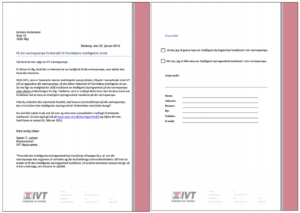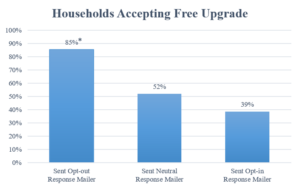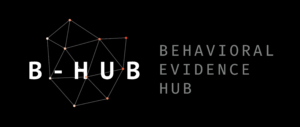
Stay the Course and Stay Warm: The Power of Defaults
Organization : B-Hub Editorial Team
Project Overview
Project Summary
A utility company in Denmark offered free upgrades to heat pumps to make them “smart.”
Impact
Using an opt-out instead of an opt-in framing increased participation in the heat pump upgrade program by more than 46 percentage points.
Challenge
Increasingly, households have the option of upgrading their homes to be more energy efficient by using technologies such as smart meters. These technologies have the capacity to drastically reduce household energy consumption without major behavior changes. Many utility companies, however, have found that households are resistant to adopting these smart technologies even when they are offered for free. This poses a problem for policymakers and community organizations that see an effortless way to reduce energy consumption, but often struggle to convince households to approve the improvements.
Design
The research team worked with a heat pump dealer in Denmark to test the effects of framing on the likelihood that individuals would consent to having their heat pump upgraded. The company offered free heat pump upgrades “consisting of an intelligent steering unit” that would be installed during the household’s next regular maintenance if they agreed. Each household was sent an envelope containing an informational leaflet, a letter from the company, and a response form with stamped return envelope.
The researchers sent each household one of three types of response form: an “opt-out” form, an “opt-in” form, or a “neutral” form. Households that received the opt-out form were given two weeks to respond and say that they did not want the upgrade. Similarly, households that received the opt-in form were given 2 weeks to respond stating that they did want the upgrade. Households receiving a neutral form were asked to respond stating whether or not they wanted to receive the upgrade. In total, there were 140 households randomly assigned to receive one of the response forms.

Example of neutrally framed letter and answering slip.
Impact
A randomized evaluation found that using an opt-out framing instead of an opt-in framing increased take-up by 46 percentage points. Of the 48 households assigned to the opt-out condition, only 7 turned down the free upgrade, an acceptance rate of 85%, whereas only 39% of the households in the opt-in condition requested the free upgrade. After a series of reminders, only 3 out of 4 households in the “neutral” group responded at all, and only 52% requested the free upgrade.

*Significantly different from the opt-in group (p<.001)
Implementation Guidelines
Inspired to implement this design in your own work? Here are some things to think about before you get started:
- Are the behavioral drivers to the problem you are trying to solve similar to the ones described in the challenge section of this project?
- Is it feasible to adapt the design to address your problem?
- Could there be structural barriers at play that might keep the design from having the desired effect?
- Finally, we encourage you to make sure you monitor, test and take steps to iterate on designs often when either adapting them to a new context or scaling up to make sure they’re effective.
Additionally, consider the following insights from the design’s researchers:
- Be persistent. The research team was able to triple the number of responses they received from households in the neutral group by reaching out multiple times.
- Try different forms of contact. Households in the neutral group who did not respond after three letters were asked over the phone whether they wanted a free upgrade to their heat pump.
- Defaults are incredibly powerful and have a large impact on the course of action. Although neutral group households chose to participate in the pump upgrade at a similar rate to the opt-out group, forcing an active choice may not always be practical or feasible, as households are often reluctant to make any decision at all.
- Many people will most likely procrastinate if they are asked to explicitly consent (“opt-in”) to a smart technology upgrade that primarily benefits the environment and broader society, with only small personal benefits, even if it aligns with their long-term goals.
Project Credits
Researchers:
Madeleine Broman Toft Aarhus University
Geertje Schuitema Aarhus University
John Thøgersen Aarhus University


